
Strengthen your ERP with Power Platform: What, Why, and How
In a constantly evolving world, the crucial question for companies remains: How to transform our ERP (Enterprise Resource Planning) into agile, innovative systems perfectly aligned with our specific needs? The answer lies in the seamless fusion between the robust functionality of ERP and the revolutionary power of the Microsoft Power Platform .
Let’s explore together the What, Why, and How of this strategic alliance, thus revealing the infinite opportunities that open up to those who dare to redefine the contours of business management.
What is the Microsoft Power Platform and what is ERP?
Microsoft’s Power Platform enables the creation of applications, automation, integration of artificial intelligence , and data visualisation. It leverages things like Data Connectors, AI Builder, Dataverse, No Code and Low-Code with Power FX and managed environments.
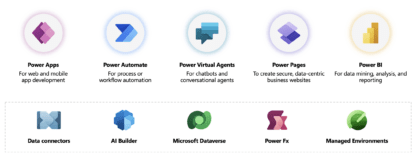
Regarding ERP, they constitute the heart of companies, integrating various business processes such as HR management, accounting, logistics, and production. ERPs offer significant benefits such as process automation, improved decision-making, better compliance, increased productivity, and reduced operational costs.
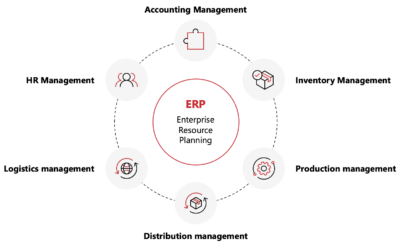
Why strengthen your ERP with the Microsoft Power Platform?
Despite the advantages of ERP, they have disadvantages such as rigidity, difficulty integrating with other applications, slow development, and limitations in terms of agility, user experience, analytics, tailor-made automation of business processes, and continuous innovation.
This is where the Power Platform comes in to fill these gaps and improve the functionality of ERPs.
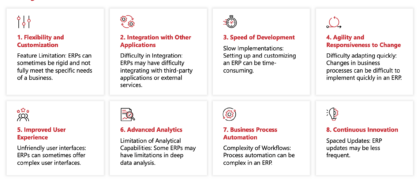
How can you strengthen your ERP with Power Platform?
Connection Capabilities
Direction Connection
- Native Connectors: Use of connectors predefined by Microsoft or ERP publishers.
- Custom Connectors: Possibility of creating your own connector using the ERP APIs or creating your own APIs for global reuse.
- Virtual tables in the Dataverse: The use of virtual tables allows the user to interact with ERP data without storing it in the Dataverse. These virtual tables are based on connectors.
Indirect Capabilities
- Dual Write: Instant bidirectional transfer of data between Dataverse and ERP.
- Custom Integration: Use of middleware to exchange data via Azure microservice, for example.
Hybrid Approach
A combination of direct connection for real-time and indirect connection for disconnected data needs, depending on the need.
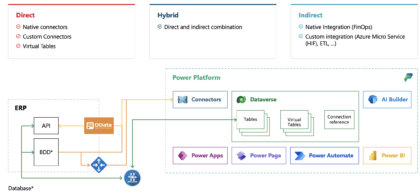
Concrete use case of using Power Platform to strengthen your ERP
Initial Problem
A client was using Excel files to manage employee bonuses, leading to errors, delays, and tracking complexities.
Power Platform solution
-
- Initial import of data into the Dataverse.
- Establishment of an approval and notification process.
- Portal for managers with transparency for employees.
- Automated checks to avoid errors.
- Automation of sending bonus data to the payroll system.
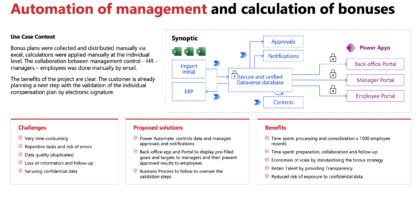
Conclusion
In conclusion, strengthening your ERP with Power Platform offers increased flexibility, customisation, speed of development, agility, and continuous innovation. The benefits of the Power Platform fill the gaps in traditional ERP, creating a synergy that boosts business operations.
